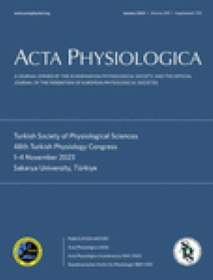GULP1 Regulates Tendon Cell Proliferation and Maturation Essential for Motor Coordination in Mice
Abstract
Aim
Tendons are fibrous tissues connecting muscles to bones, providing joint stability and enabling movement. Adaptor proteins regulate cellular processes essential for maintaining tendon function. Phosphotyrosine-binding domain-containing engulfment adaptor protein 1 (GULP1) participates in multiple cellular activities; however, its specific role in tendons remains unclear. This study aims to investigate the expression and function of GULP1 in tendons using Gulp1 knockout (KO) mice.
Methods
Motor behavior and limb muscle strength were evaluated using gait analysis, footprint tracking, ledge walking, hindlimb clasping, and the hanging wire test. Protein and mRNA expression levels were assessed using Western blot and quantitative real-time PCR, respectively. Histological analysis was performed on patellar and Achilles tendons, with BrdU labeling for cell proliferation assessment. Primary tail tendon fibroblasts were analyzed, and collagen fibril diameter distribution was measured using transmission electron microscopy (TEM).
Results
Gulp1 KO mice exhibited impaired motor coordination characterized by abnormal gait, reduced limb strength, and poor balance, including shorter stride and stance lengths, along with greater sway length. GULP1 expression was higher in tendons than in other tissues. Gulp1 KO mice exhibited reduced Achilles tendon thickness, decreased tendon cell proliferation, diminished ERK1/2 phosphorylation, and reduced colony formation in primary tendon cells. Expression of tendon-specific genes (Scleraxis, Mohawk, and type I collagen) was downregulated in Gulp1 KO mice. TEM analysis revealed smaller collagen fibril diameters and disrupted fibrillogenesis in Gulp1 KO mice.
Conclusion
GULP1 plays a critical role in tendon cell proliferation, differentiation, and collagen fibrillogenesis, which are essential for maintaining tendon structure and function.

 求助内容:
求助内容: 应助结果提醒方式:
应助结果提醒方式:


